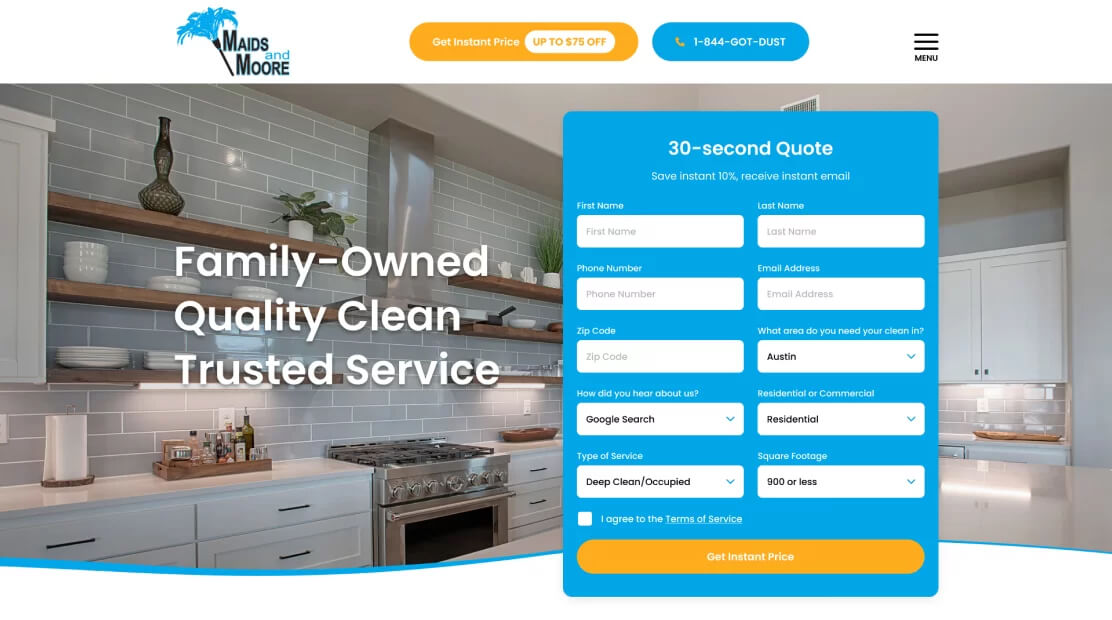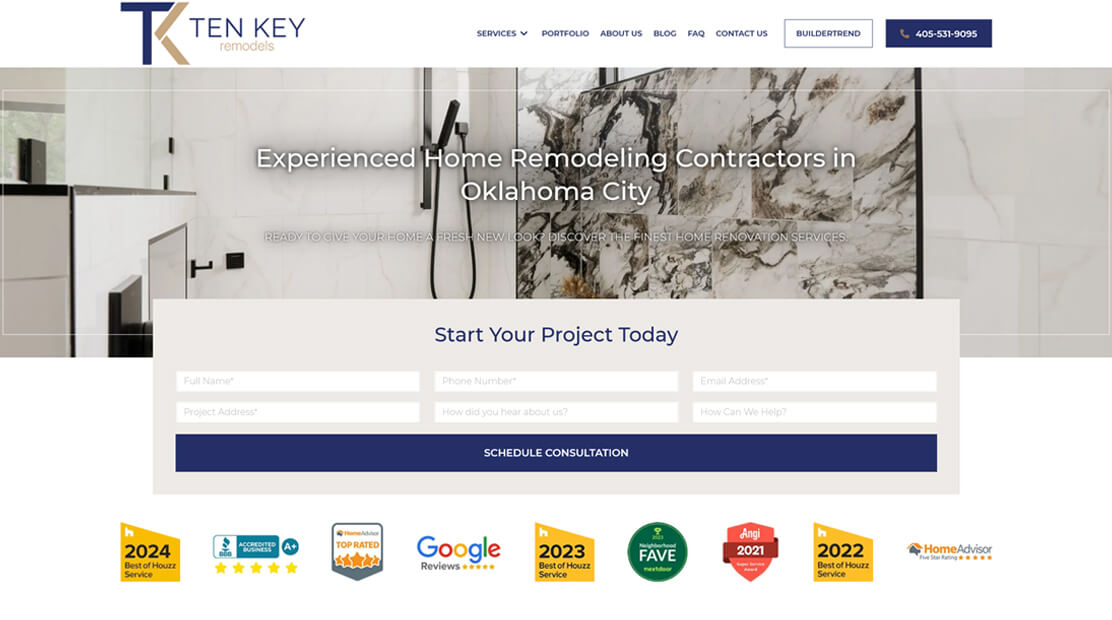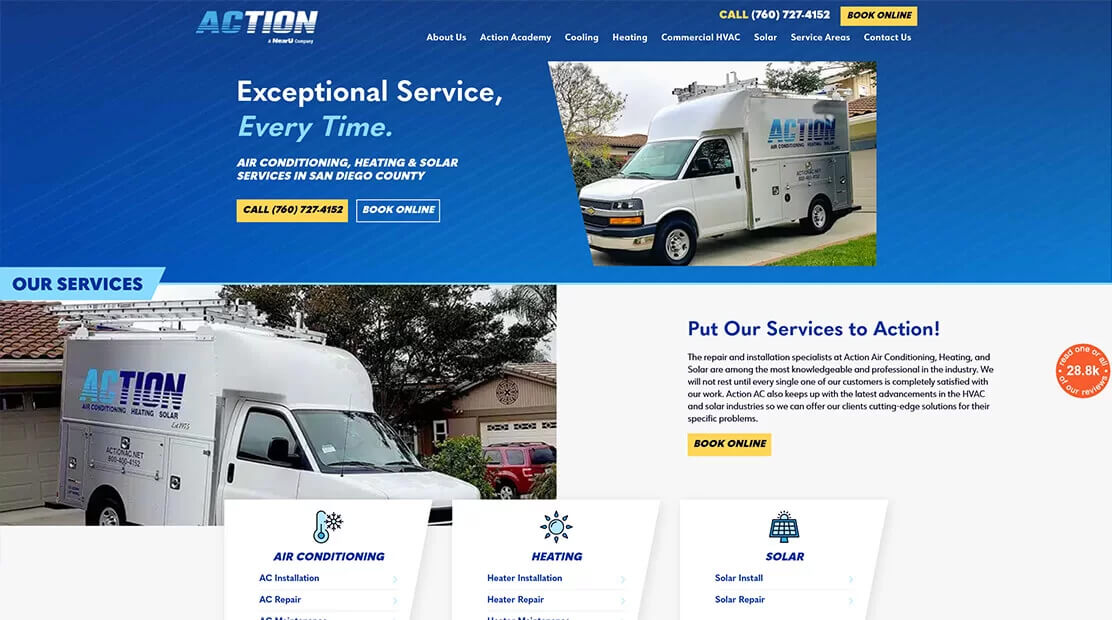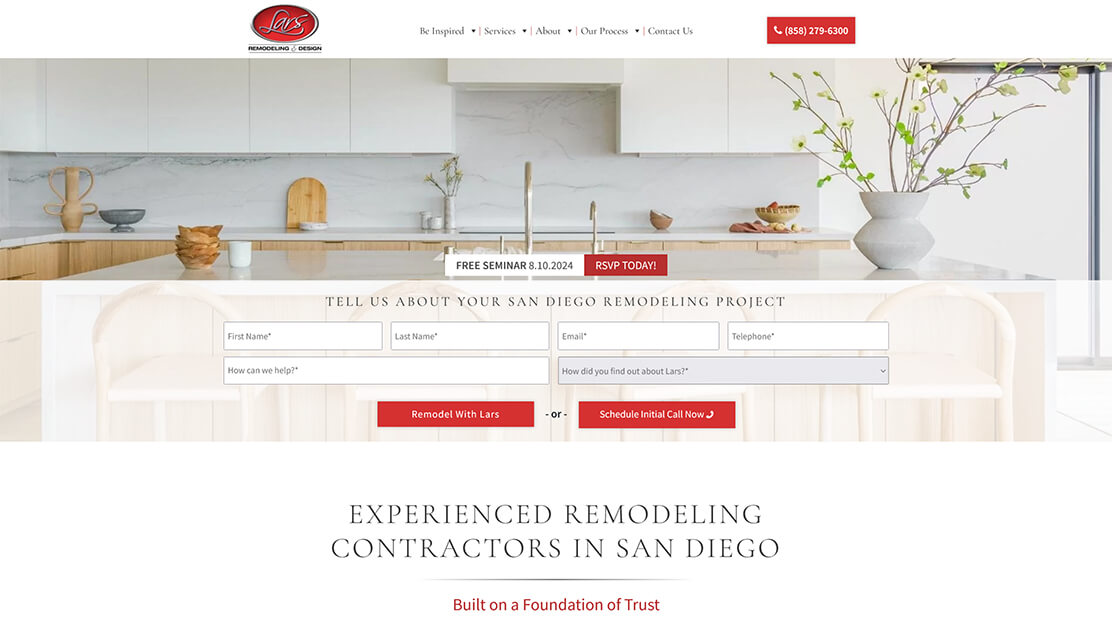With constant Google updates, strong competition, and AI overviews, it’s becoming significantly more challenging to keep your website relevant on Google in 2024.1 Luckily, SEO interlinking remains one of the most powerful tactics to make your visibility and ranking grow.2 A whopping 80% of search engine optimization experts believe that links will still be a ranking factor a decade from now.3 Internal links in SEO serve as a powerful tool to improve both your website’s search engine rankings and user experience.2 There’s a good reason why experienced link builders build 3.57x more links than beginners.3 If you strategically use the right tactics to your advantage, you can guide users to relevant content and distribute authority throughout your site, which will result in improving your overall visibility.2

How optimized is your website? Find out now!
Get My Free AnalysisWhat is interlinking in SEO?
In very simple terms, internal linking in SEO is the act of linking one page on your domain to another within the same domain. These links help users move around your site easily and play a big part in organizing your content. As you connect the related pages, you make it easier for visitors to find what they need and keep them engaged. This also spreads the site’s ranking power, known as link equity, across different pages.4,5,6 It’s one of the best ways to build a well-structured website architecture, which could be one of the reasons why as many as 79.7% of experts consider link building a very important part of their strategy.3 All in all, this is a basic but powerful tool in website management, especially for user experience and SEO.4,6
What are the SEO benefits of a powerful interlinking strategy?
Your internal links affect everything from your page ranking to user experience.2 If you know how to use their potential to your advantage, you can come up with the best internal linking strategy for your website. Let’s take a deep dive into all the benefits and learn why this powerful tool is as important as ever.
1. Improved crawling & indexing
Google relies heavily on internal links to understand and organize your website’s structure. These links help Google “crawl” through your site, allowing it to discover and index all of your pages. A well-structured internal linking system helps Google navigate your site efficiently and at the same time, signals which pages are most important.4,6
This increases their chances of ranking well in search results. However, if key links are buried or missing, Google’s crawlers might struggle to find those pages, so this reduces their visibility.4,6 There’s a good reason why 93.8% of link builders claim that link quality is more important than quantity.3 If you carefully manage your internal links and pay special attention to their quality, you will easily guide both visitors and Google to your most valuable content.4,6
2. Enhanced page authority distribution
Strategic interlinking in SEO allows you to spread link equity (ranking power) from your most authoritative pages to other important content on your site. When a high-authority page links to another page, it helps boost the linked page’s visibility in search results.4,6,7 However, it’s important not to overdo it, as too many links can actually do the opposite of what you intended and dilute the link value.8
How many internal links per page would be optimal, then? Some research shows that only 36% of SEO specialists prefer using 4-5 internal links in a blog post, but 51% prefer just two to three. Some experienced professionals do this to maintain content relevance, avoid over-optimization, and make sure that each link effectively distributes link equity without overwhelming the user. Again, this is the go-to rule for blogs and doesn’t mean that more links are not appropriate in longer content. On some longer pages, even more than 10 interlinks can still be optimal.9
3. Increased engagement & lower bounce rates
A strong internal linking strategy helps keep users engaged by directing them to relevant content within your site. When users easily find what they’re looking for, they’re more likely to spend more time on the page, explore more pages, and engage with your content.10
This also reduces your bounce rate, which is a positive signal to Google that your site is providing value. The longer users stay on your site and the more they interact, the better it is for your metrics.11 Well-placed internal links can naturally lead users through your content and improve their overall experience.10
4. Avoiding orphaned pages
Without interlinking, some of your pages might become “orphans”, meaning Google won’t find them. Orphan pages aren’t linked to from anywhere else on your site, so they often go unnoticed in search results. This can seriously affect your ranking and visibility since Google won’t be able to index them properly. It even affects the user experience negatively, as your users have no way of finding these pages and they could contain information they need. To avoid this, you have to make sure every page is linked to other content on your site.12
5. Strengthening the site’s structure with hierarchical links
The point of good internal linking in SEO lies in creating a clear, logical structure that both your users and Google can easily follow. When your site has a hierarchy (parent, child, and sibling pages), it’s important to link the topically related pages together. This helps Google understand how your content is organized and makes it easier for users to navigate.13
For example, linking a parent page to its child pages and vice versa helps make the relationship between them clear, while linking sibling pages to each other strengthens this structure. Adding links to categories and tags also helps Google and users see how your content fits together, which makes your site a lot easier to explore.13
Ready to dominate the search results? Let’s do it.
Get a QuoteWhat are the different types of interlinking?
While the core concept of interlinking remains the same, there are several distinct types of internal links you can employ, each with its unique role. Let’s take a look:
1. Navigational links
Navigational links are the main links used in a website’s navigation menu (e.g., header, footer, or side menus). They help users access the primary sections or pages of a website, like the home page, services, or contact pages. These links are critical for ensuring that both your users and Google can easily navigate your website and access the most important pages.7
2. Contextual links
Contextual links are embedded within the content of a webpage, typically within a sentence or paragraph in the main text body. These links point to related content on the same website, so they provide additional information or context to the reader. They’re highly valuable for SEO because they help Google understand the relationship between different pieces of content and distribute link equity throughout your site. Let’s take a look at an internal links example. If you have a blog about “The Benefits of Green Tea”, it might include a contextual link to a separate blog titled “5 Delicious Green Tea Recipes,” so it can entice readers to explore further and learn more about incorporating green tea into their diet.7
3. Footer links
Footer links are found at the bottom of a webpage. These links often include less critical navigation options, such as links to the about us, contact us, or other secondary pages. While these links are generally less prominent, they still contribute to the overall site structure and help Google index these important but often overlooked pages.7
4. Image links
Image links are hyperlinks embedded within images that direct users to another page on your website. It’s very important to include alt text for the image because Google uses it as anchor text to understand the linked page’s topic. This practice is an important part of internal linking for SEO because it provides Google with clear, descriptive metadata. Using relevant filenames, captions, and positioning images next to relevant text can further help Google accurately interpret the content and purpose of the image.14
5. Breadcrumbs
Breadcrumbs are a simple yet powerful type of internal link that helps users easily navigate your website. They show users the path they’ve taken and allow them to quickly jump back to earlier sections, which can significantly improve their browsing experience. Breadcrumbs clarify the structure of your site, so they make it easier for Google to understand how your pages are connected. This can strengthen your internal linking strategy and even lead to features like rich snippets in search results, which is great for visibility.15,16
What is the difference between interlinking and external linking?
Internal linking and external linking are two fundamental strategies in SEO, but they serve different purposes and come with different benefits:17,18,19
1. Purpose and impact
External linking involves linking out to other websites. Unlike interlinking, which improves the ranking and visibility of the key pages on your own website, external linking impacts both your site and the site you’re linking to. This serves to provide additional resources for your readers, while also signaling to Google that your content is credible and well-connected within its niche.17,18,19
If you choose high-quality, authoritative pages to link to, this can be a powerful tool for growing your reputation in the eyes of Google. As many as 94% of all blog posts have zero external links, which means that you have an opportunity to use this tactic to its full potential and join the well-informed professionals who are already doing it.20
2. User experience
Internal links for SEO can significantly benefit the user experience by helping them navigate your content more easily and keeping them engaged. However, a good external linking strategy can offer value to your users by directing them to additional, authoritative information outside your site. While this might take them away from your site, it builds trust by showing that you’re providing well-rounded, useful content that extends beyond your own domain.17,18,19
3. Anchor text & relevance
If you use descriptive, keyword-rich anchors, you can improve the relevance of your internal pages for specific search queries. For external links, anchor text is equally important, as it helps your users and Google understand the context of the linked content. Well-chosen anchor text in external links clearly indicates to the user what they can expect to find on the linked page, so this can further establish the relevance and authority of your content. For example, if you’re referencing a study about Diabetes symptoms on a health website, you should hyperlink specific text like “research findings about diabetes symptoms” instead of a vague phrase like “this article.”17,18,19
4. Risk management
With SEO interlinking, the main risk is overwhelming a page with too many internal links, which can dilute their effectiveness and potentially confuse both users and Google. However, this risk is relatively low if you do this strategically.8 External linking, on the other hand, carries more risk, particularly if you link to low-quality or irrelevant sites. Poor external links can damage your credibility and ranking. You should regularly audit your external links to ensure they point to authoritative, trustworthy sources.17,18,19
Where can I outsource SEO interlinking?
Don’t let your valuable content go unnoticed. One Click Marketing is your go-to SEO digital marketing agency, here to boost your Google rankings and help your business grow. With over 13 years of experience, a dedicated link-building team, and a proven track record of delivering measurable results, it’s not hard to see why we’re the choice of so many reputable, successful businesses from various industries. Our team of SEO experts and link-building specialists knows how to leverage both internal and external linking to your advantage, but we don’t just stop at that.
We’re committed to providing comprehensive solutions that drive real business growth. We’ve helped clients achieve an average revenue growth of 40%, which serves as a testament to our dedication and expertise. Ready to take your website to the next level? Don’t settle for mediocre results. Contact One Click Marketing today for a free consultation and let’s unlock your website’s true potential together.
Let’s build a winning strategy together.
Get a QuoteSources:
- Haines, C. (2024, July 5). The 6 biggest seo challenges that we’re facing in 2024. SEO Blog by Ahrefs. https://ahrefs.com/blog/seo-challenges/
- Hardwick, J. (2019, January 31). Internal Links for SEO: An Actionable Guide. SEO Blog by Ahrefs.https://ahrefs.com/blog/internal-links-for-seo/
- 71 Link Building Statistics [Improve Your 2023 SEO Strategy]. (2023, January 2). Authority Hacker. https://www.authorityhacker.com/link-building-statistics/
- Moz. (n.d.). Internal Linking — SEO Best Practices 2020. Moz. https://moz.com/learn/seo/internal-link
- What is Link Equity? How Is Link Equity Determined? (n.d.). Moz. https://moz.com/learn/seo/what-is-link-equity
- Yoast. (2019, March 15). Internal linking for SEO: Why and how? Yoast. https://yoast.com/internal-linking-for-seo-why-and-how/
- Harsel, L. (2023, December 22). Internal Links: Ultimate Guide + Strategies. Semrush Blog. https://www.semrush.com/blog/internal-links/
- Google Cautions Against Using Too Many Internal Links. (2021, July 6). Search Engine Journal. https://www.searchenginejournal.com/google-cautions-against-using-too-many-internal-links/412553/
- How to Use Internal Links to Boost SEO and the User Experience | Databox Blog. (2019, July 2). Databox. https://databox.com/how-to-use-internal-links
- 11 Common Internal Linking Mistakes & How to Fix Them. (n.d.). Semrush Blog. https://www.semrush.com/blog/internal-linking-mistakes/
- Pecánek, M. (2020, November 3). What Is Bounce Rate? How to Interpret and Work with It. SEO Blog by Ahrefs. https://ahrefs.com/blog/bounce-rate/
- Orphan Pages: How They Affect SEO (And How to Fix Them). (n.d.). Semrush Blog. https://www.semrush.com/blog/orphan-pages/
- Willemien Hallebeek. (2020, July 8). Parent and child pages: Linking hierarchical post types for SEO. Yoast. https://yoast.com/hierarchical-post-type-seo-link-parent-child/
- Google Images SEO Best Practices | Google Search Central | Documentation. (n.d.). Google Developers. https://developers.google.com/search/docs/appearance/google-images
- Breadcrumbs – Yoast SEO Features • Yoast. (2022, May 6). Yoast. https://yoast.com/features/breadcrumbs/
- Crowe, A. (2020, September 12). What Are Breadcrumbs & Why Do They Matter for SEO? Search Engine Journal. https://www.searchenginejournal.com/breadcrumbs-seo/255007/
- Seo Glossary definition page. (n.d.). Ahrefs. https://ahrefs.com/seo/glossary/external-link
- Silva, C. (2023, June 29). External Links (SEO Best Practices). Semrush Blog. https://www.semrush.com/blog/external-links/
- Moz. (2019). External Links | Learn SEO. Moz. https://moz.com/learn/seo/external-link









